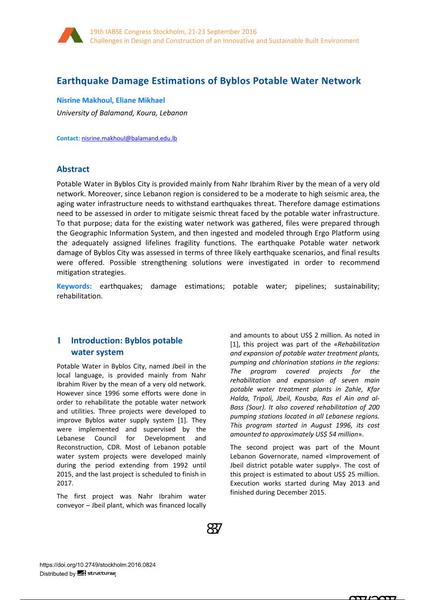Earthquake Damage Estimations of Byblos Potable Water Network

|
|
|||||||||||
Détails bibliographiques
| Auteur(s): |
Nisrine Makhoul
(University of Balamand, Koura, Lebanon)
Eliane Mikhael (University of Balamand, Koura, Lebanon) |
||||
|---|---|---|---|---|---|
| Médium: | papier de conférence | ||||
| Langue(s): | anglais | ||||
| Conférence: | IABSE Congress: Challenges in Design and Construction of an Innovative and Sustainable Built Environment, Stockholm, Sweden, 21-23 September 2016 | ||||
| Publié dans: | IABSE Congress Stockholm, 2016 | ||||
|
|||||
| Page(s): | 837-844 | ||||
| Nombre total de pages (du PDF): | 8 | ||||
| Année: | 2016 | ||||
| DOI: | 10.2749/stockholm.2016.0824 | ||||
| Abstrait: |
Potable Water in Byblos City is provided mainly from Nahr Ibrahim River by the mean of a very old network. Moreover, since Lebanon region is considered to be a moderate to high seismic area, the aging water infrastructure needs to withstand earthquakes threat. Therefore damage estimations need to be assessed in order to mitigate seismic threat faced by the potable water infrastructure. To that purpose; data for the existing water network was gathered, files were prepared through the Geographic Information System, and then ingested and modeled through Ergo Platform using the adequately assigned lifelines fragility functions. The earthquake Potable water network damage of Byblos City was assessed in terms of three likely earthquake scenarios, and final results were offered. Possible strengthening solutions were investigated in order to recommend mitigation strategies. |
||||
| Mots-clé: |
tremblements de terre
|
||||
